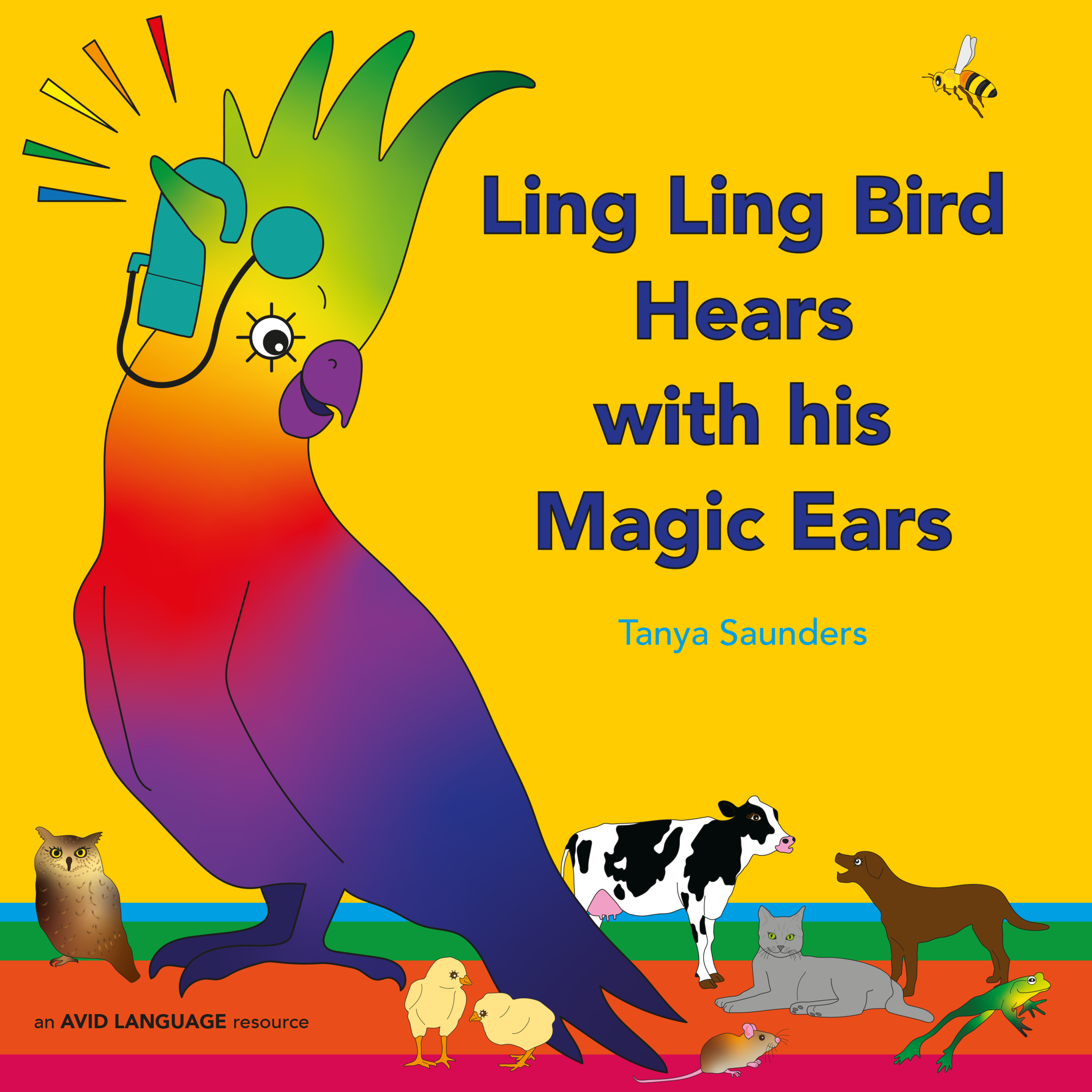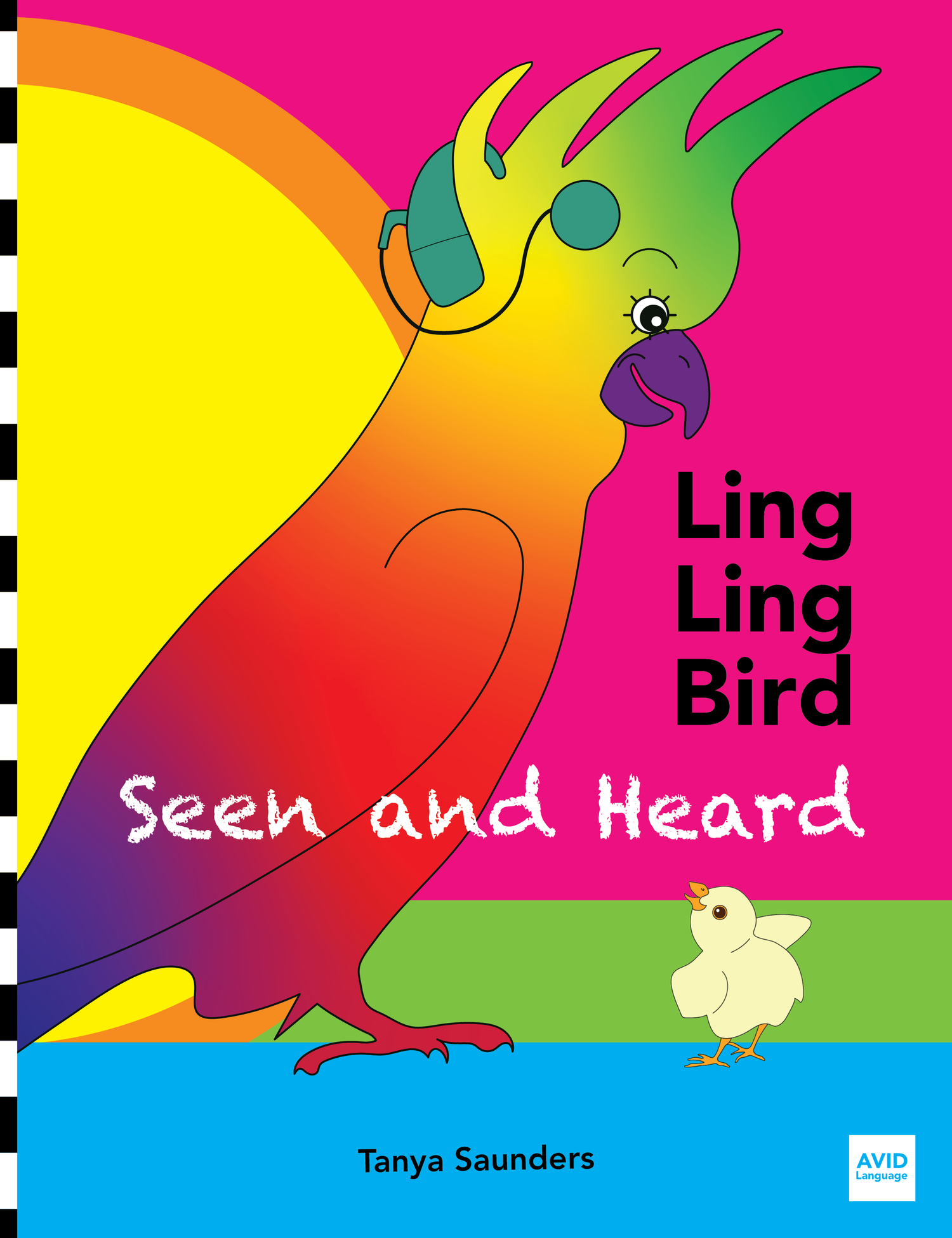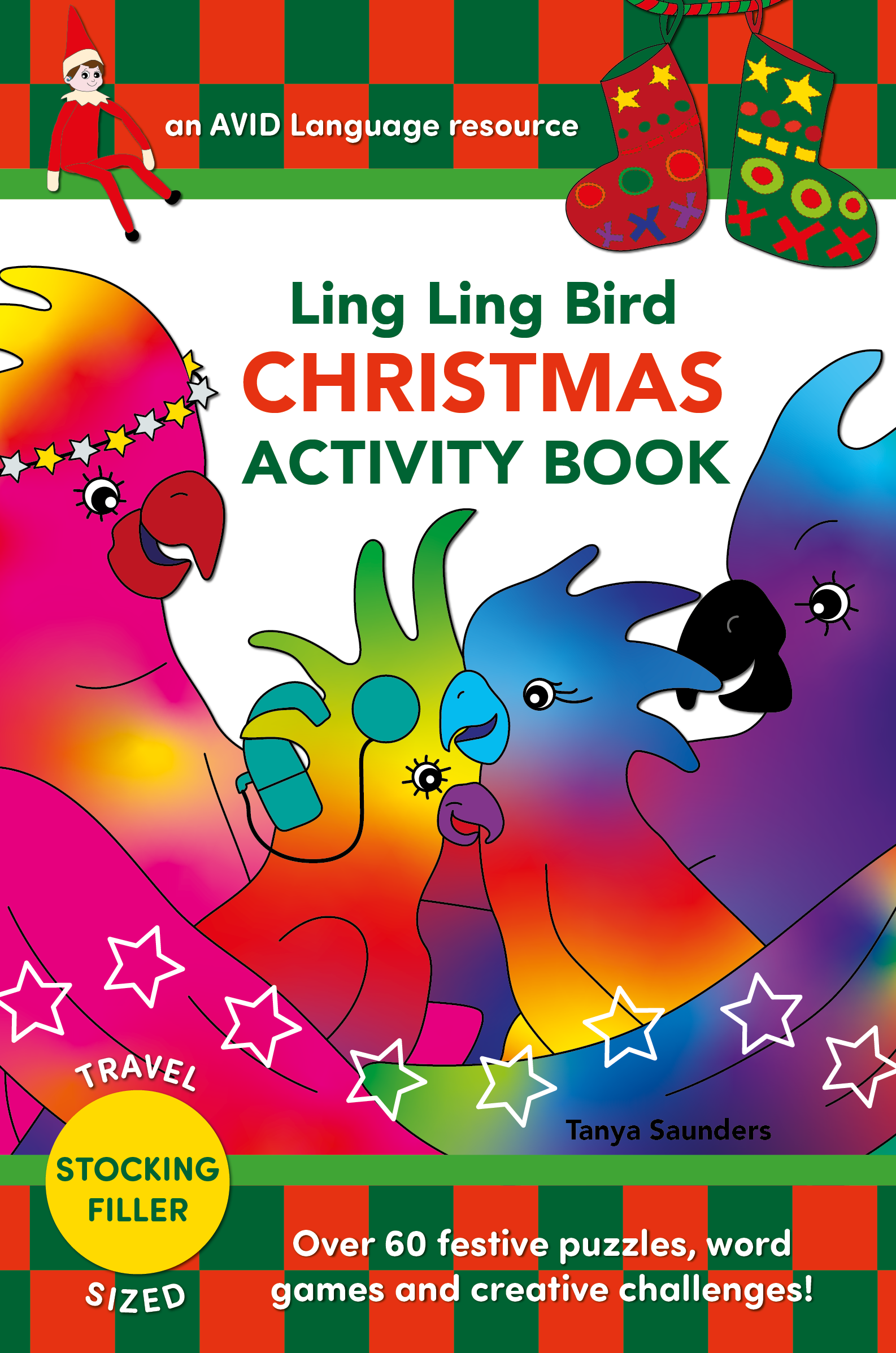Ling Ling Bird: WHO AM I?
The ever-playful Ling Ling Bird returns with a boldly illustrated story encouraging early learners to practice new speech sounds and the ‘serve and return’ of conversation.
Am I a toucan that goes tap tap tap?
Nooooooo, you’re not a toucan that goes tap tap tap.
Am I a woodpecker that goes rat-a-tat-tat?
Nooooooo, you’re not a woodpecker that goes rat-a-tat-tat.
Then, WHO am I?
Ling Ling Bird knows he’s a bird, but what kind of bird is he? He is determined to find out! Along the way, he not only encounters a dazzling array of other birds, but also a range of different speech sounds. He learns some new vocabulary and a critical skill for developing communication: two-way engagement. What fun it is too! And to top it all, the story ends with a joyful song, set to a familiar, family-favourite tune – when you see the words, you’ll probably know it straight away! (But for those who don’t recognise it, the tune is ‘Jingle Bells’.)
‘Ling Ling Bird: Who Am I?’ may look deceptively simple, but it packs a punch in terms of learning opportunities. Here are nine ideas for ways in which parents and professionals can use this book as a fun and incentivising way to support speech and language development in their very early listeners and learners:
The book supports the development of strong listening skills by utilising the ‘audition before vision’ mechanism (we hear the names and sounds of new birds before we see them on the following page), which allows the child’s brain to focus on the sounds they are hearing before the visual part of the brain takes over.
Repetition of different speech sounds within the story reinforces the learning and retention of these sounds.
This book features an array of different birds (not your typical cast of characters!) so offers an opportunity to learn some new and different vocabulary. Don’t be afraid of introducing tricky or unusual words when talking or reading with your child - even if they can’t use the words themselves yet, they will be building up a strong memory bank of vocabulary in their minds for use later. (Consider introducing/pre-learning the more tricky names before you start reading.)
The repetitive structure of the story encourages the practice of ‘auditory closure’ (the adult reader pauses when reading to allow the child to fill in the gap/pre-empt the next words.) This is highly incentivising for children, and can encourage reticent children to have a go at using their voices without feeling under any pressure to do so. If the child is unwilling or unable to fill the gap, after a pause the adult can repeat and complete the sentence, thereby modelling the language to the child. Next time around, or the time after that (or the time after that!) the child may have a go themselves. The more children hear words, the sooner they will be able to say them, so while repetition may feel frustrating or boring to adult readers, it is highly beneficial to little language learners.
The book encourages children to guess and anticipate what comes next.
The question-and-answer format supports two-way engagement between adult and child, providing a fun way to practice the ‘serve and return’ of conversation (without the child even realising they are practicing!). As the book becomes more familiar to the child, the adult and child can swap roles, with one initially asking the questions and the other answering, and then reversing the roles (which also helps the child to learn the important social skill of turn-taking.)
When the book becomes more familiar to the child, you can play memory games to strengthen their auditory memory. How many different birds can you remember? In which order do they appear?
The book can be used to introduce the concept of finding different types of things within a broader category. In this case, all the characters in the book are birds (category) but they are all different species (types).
Singing is such a fun and effective way to develop phonological awareness and embed language learning. The book ends with a joyous little song, set to a family-favourite tune (Jingle Bells).
About Ling Ling Bird
Ling Ling Bird is deaf and uses bilateral cochlear implants, which help him to hear. He doesn’t let his hearing loss hold him back and is always reaching for the stars. In our range of bright and colourful books, you’ll find him getting up to all sorts of adventures with his family and friends. Written by CI-Mum Tanya Saunders and published by AVID Language, all the Ling Ling Bird books support the development of speech and language while championing representation and creating awareness by providing mirrors and windows for deaf children and their typically hearing peers.
More Ling Ling Bird titles:






